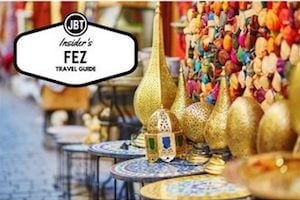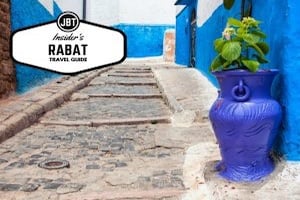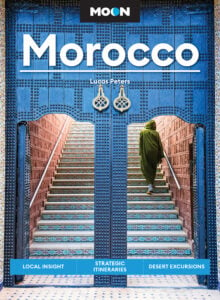
The Bahia Palace is both a palace and a set of gardens situated in the medina of Marrakech, Morocco, just along the northern edge of Mellah, also known as the Jewish Quarter. While the exact dates for the construction of this palace are not known, records indicate that it was commissioned between 1859 and 1873. It was completed in 1900.
The construction was the work of a father and son, Si Moussa and Ba Amed. The two were vizirs to Alawid Sharifs, Moroccan sultans. The name Bahia means “brilliance.” The building incorporates beautiful and intricate stucco work and a form of polychrome mosaic known as zellij (or zellige), which was topped by painted, inlaid woodwork ceilings.
It was intended to serve the personal uses of the sultan. In fact, the palace also bore the name of one of his wives. His harem was housed here, and it included an enormous court decorated with a central basin with the concubines dwelling in a series of surrounding rooms. The whole complex is quite large, covering eight hectares. It is comprised of a series of walled gardens, pavilions and courtyard structures arranged in various scales.
An Ornate Getaway
Several fountains, along with orange, cypress, jasmine and banana trees, decorate the older part of the Bahia palace known as Dar Si Moussa. In fact, this section is but a small portion of the overall complex. There are many ornate features, including decorative rooms with ceramic tiles.
The newer parts of the palace, those built by Ba Ahmed, were intended to surpass the architectural achievements of his father. In fact, he added several additional sections to the palace that constitute its larger and rather irregular layout. He also employed master architects like al-Hajj Muhammed bin Makki al-Misfiwi to create and decorate some of the bigger apartments. Yet, much of the wealth and fine furnishings were stripped away when Ba Amed died in 1900 and the sultan at the time, Mawlay Abd al-Aziz, raided the palace.
Today, the Bahia Palace is still being used by the Moroccan government as a formal venue for receiving special guests and foreign dignitaries. Additionally, a section of the palace is occupied by the Moroccan Ministry of Cultural Affairs.
Visitors to Marrakech should find it fairly easy to walk to the medina in order to tour the palace complex. It is truly a cultural treasure trove, offering glimpses of a Moroccan kingdom’s former opulence as well as its eye-catching craftsmanship.
Written by Shaun Kilgore.
Photo by **ste**.









Bahia Palace such a beautiful palace! Amazing detail you shared in your post! It is very peaceful and beautiful spot away from the hustle and bustle.